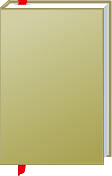

 |

|

The average rating for Teaching Tips for Early Childhood Religious Education based on 2 reviews is 3 stars.
Review # 1 was written on 2016-09-13 00:00:00 Joshua Rodriguez Joshua RodriguezAn interesting look at the development of curriculum by scientists after the Cold War. It put history and politics in context with the curriculum we see today, which gave me a great perspective. It was well written and provided a view into that time that I don't know I would be able to get elsewhere. (I read this for curriculum class) |
Review # 2 was written on 2014-01-07 00:00:00 Benoit Groleau Benoit GroleauA nice little monograph. It is not earthshaking, nor is it meant to be. It sets out what it intends to do, and does so nicely in a readable way. This is not always true of books put out by Palgrave. John L. Rudolph is a historian of education, but here takes on the history of science, too. He is interested in the ways that scientists became involved with preparing curriculum for schools int he 1950s and 1960s and is especially impressed by the differences between then and now—at the time, science was seen as an unalloyed good, and public education a universal desiderata, as compared to today, when science is questioned for its politics and public education is being torn in different directions. Why, he asks, did scientists become involved at this moment? And what was the effect? to answer, he looks particularly at the role of the National Science Foundation, and two related committees, one focused on physics, the other on biology. His research is extensive and grounded in a number of archival repositories. Rudolph argues that scientists were concerned over their now public image. The bomb, in particular, had made scientists out to be something fiendish in some people’s eyes. At the same time, they were concerned over the Cold War: that America was slipping behind—an especially keen worry after the launch of Sputnik—and that students weren’t being properly prepared for science eduction. (Sound familiar?) Their concern coincided with a humanistic attack on the then-current curriculum which mostly dispensed with disciplinary learning—math or physics or literature—and instead tried to prepare all students for everyday life—not unlike vocational training. Proponents of this system argued it was more democratic, as it was impossible to know what students would go to college and what jobs they would take. Their critics argued that students needed to be intellectually challenged and rooted in the classics and exposed to the wonders of knowledge. As it happened, the initial critics could not overthrow the curriculum, but scientists had the cultural power to make the topic one worthy of public discussion. The physicists wanted to push aside classical physics—which at the time was mostly taught using everyday examples, like refrigerators and cars—and bring in relativistic and modern science. The conferences that they used to write up these standards were modeled on the conferences used during the war to address scientific problems—and so they ended up privileging cutting edge research and laboratory methods. The biologists came together a few years later, with a less august body of scholars, and trie dot implement similar changes. They were upset that biology in the past had mostly been presented in the form of hygiene and the study of various taxa. Biologists, though, had a much more difficult time writing a unified curriculum—indeed, they ended up with three—but did in general agree that evolution should be the unifying theme of the field. In chapter 7, the last narrative chapter, Rudolph finally exposes against whom he is arguing. Conventional histories of education, he says, have it that the scientists themselves, writing these curricula, focused on the manipulation of matter—the creation of technologies as opposed to the understanding of science as a humanistic, liberal arts pursuit. Rudolph says that is not true, The scientist-educators he followed wanted science to be seen as a glorious human achievement. That was one of the reasons they entered the debates int he first place: to humanize science, to show it was not just technology. However, they had patrons—the US government, industries such as GE—and these patrons and other ideas. They wanted the curriculum to be much closer to engineering—indeed, GE basically wanted to seed the curriculum with propaganda films in support of the company. And so it was the dance between piper and the one who pays that created the curriculum. The book does leave a lot of questions. Rudolph acknowledges some of these in the introduction—for example, how much of this curriculum was ever implemented, and what did it look like in practice? It is no sin that the book does not answer this query—it was not Rudolph’s question. The bigger concern is Rudolph’s claim that the military and government in some way corrupted science. He poses the scientist’s idealized vision of themselves—their work as free inquiry, democracy embodied—against the realities of having to satisfy those who paid the bills. A lot of this seems to come from Bill Stuart’s work in the 1990s. But questions were raised then about Stuart’s claims, and can be similarly applied to Rudolph’s: when has such a science free from interference by patrons ever existed? It is a utopia. Someone will always pay the bills. The correct comparison isn’t between complete freedom and some compromises—but who to make the compromises with. |
CAN'T FIND WHAT YOU'RE LOOKING FOR? CLICK HERE!!!